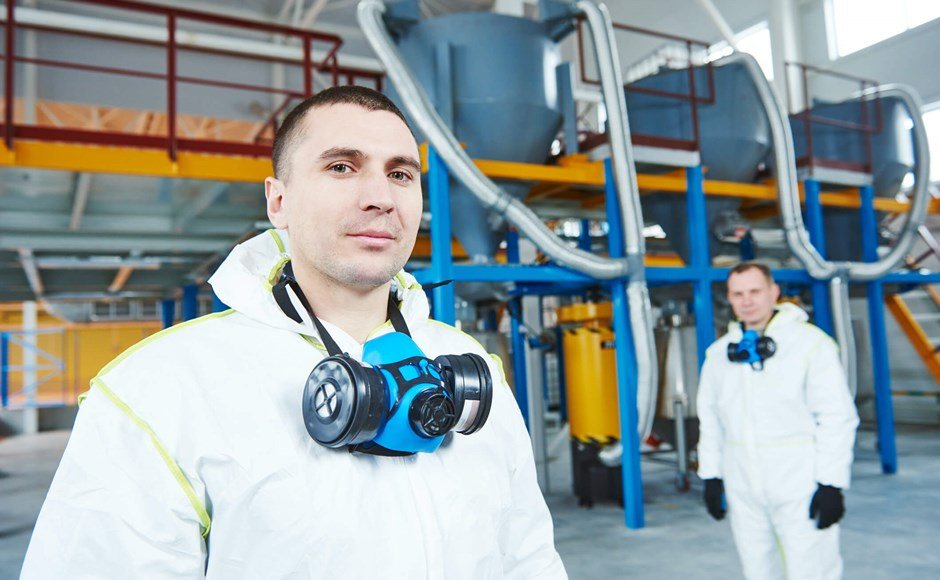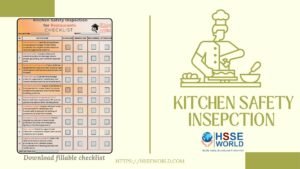Complete a Respirator Fit Test
4 min readThose who work with hazardous materials are constantly at risk. Gases and evaporating chemicals can cause invisible damage to the lungs and airways before anybody even realizes they are present. The only way to protect the body’s internal organs from exposure is to use an adequate and well-functioning respirator.
Gases, vapors, and fumes, however, can find their way into the smallest openings. That means a respirator won’t provide sufficient protection unless it’s fitted properly.
Don’t leave safety up to chance. Read on and find out how to make sure any respirator fits the way it was meant to

TIP: Fit testing ensures a respirator is doing the job it was made for.
Mind the Method
OSHA accepts two fit tests for respirators, and it’s important that you select an approved method when conducting yours. These tests are not difficult and can generally be completed in 15-20 minutes.
For more detailed information, see section 1910.134 App A of the Occupational Safety and Health Standards.
Initial Selection
When selecting a respirator, the paramount concerns should be whether it provides adequate protection based on the risk of exposure and whether it fits properly. Conduct a brief review of how to put on and wear a respirator prior to fit testing to ensure it is comfortable enough.
Things to consider when selecting a respirator include:
- Does the mask sit correctly on the nose, face, and cheeks?
- Is there adequate space for eye protection?
- Can the user still speak while wearing it?
- Is the chin positioned properly?
- Does the respirator fit over the bridge of the nose?
- Is the strap taught but not too tight?
- Does the respirator cover the entire space from nose to chin?
- Is there a chance the respirator will slip out of place?
( Read More about : How to select the right type of respirators the basic types.)
Work It Out
There are certain exercises that must be performed, regardless of the kind of fit test being done (qualitative or quantitative). Be sure the employee is wearing any prescription eyewear or personal protective equipment (like earmuffs) that could affect the seal around their face.
Each exercise should last one minute, except for the grimace test which only lasts fifteen seconds. If the employee becomes uncomfortable or the respirator fails for whatever reason, another respirator should be selected and the test restarted.
- Start at baseline: a normal stance with normal breathing and no speaking
- Still standing in a normal position, the employee should take slow, deep breaths
- Next, the employee should turn their head from side to side
- Still standing in place, the employee should move their head up and down, inhaling each time they look at the ceiling
- Have the employee speak loudly and slowly enough to be heard by the tester while counting backward from 100, reciting a song, or reading prepared text
- If using quantitative fit testing (see below), the employee should be asked to grimace for a period of fifteen seconds
- The employee should bend at the waist like they’re about to touch their toes
- Finally, the employee should return to normal stance and normal breathing for a period of one minute
Qualitative Fit Test
Using a pass/fail approach, the qualitative fit test (QLFT) uses the employee’s sense of taste or smell or their reaction to an irritant to detect if there is leakage in the respirator face piece. It doesn’t measure how much of the substance leaks through, but only if the substance is detected. This type of test is generally used for respirators that only cover the mouth and nose (half-mask respirators).
OSHA notes four acceptable options for this test:
- Isoamyl Acetate gives off a scent like bananas
- Saccharin tastes sweet
- Bitrex tastes bitter
- Smoke as an irritant that will cause coughing
Quantitative Fit Test
Instead of relying on the user’s personal judgment, quantitative fit testing (QNFT) uses a machine with a probe and hose connected to the face piece to gauge the amount of leakage. This option can be used for any tight-fitting respirator.
OSHA notes three acceptable options:
- Generated aerosol
- Ambient aerosol
- Controlled negative pressure
Fit Tests Travel
For employees who transfer employment, fit tests that were conducted within the last twelve months are accepted, provided they were for the exact same make, model, style, and size as they will be using on the new job. This option (known as “fit testing portability”) allows fit testing to follow workers provided the record-keeping meets OSHA’s standards.
Relevant Reminders
When it comes to testing respirators for fit, it is important to account for anything that can impact the seal. These fit tests should not be confused with seal checks (which should be done each time the respirator is used to determine if adjustments are needed).
Respirator fit tests should be done annually unless a significant physical change occurs that would impact the seal. Situations that would call for another fit test to be done include:
- Large changes in body weight (loss or gain)
- Major dental work
- Facial surgery
- Scarring in the vicinity of the seal
- Growing or shaving off facial hair
- New prescription eyeglasses or personal protective equipment
Just Breathe
When it comes to protecting employees from toxic fumes, there’s no room for error. And that means conducting regular and proper fit tests for respirators.
Remember to use the exact make, model, style, and size that will be used on the job. And anytime there are significant changes to the type of work being done, the opportunities for exposure, or the employee’s appearance, it’s time for another test.
Following these basic guidelines can help ensure that everyone breathes a little easier.




1 thought on “Complete a Respirator Fit Test”